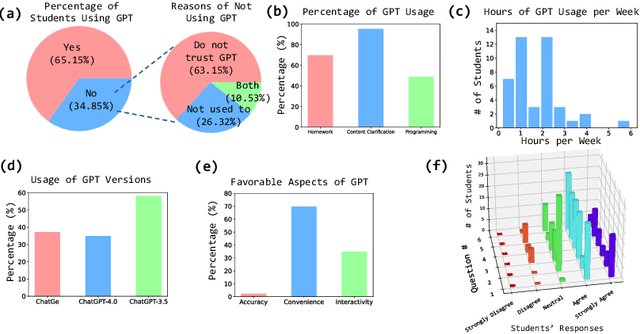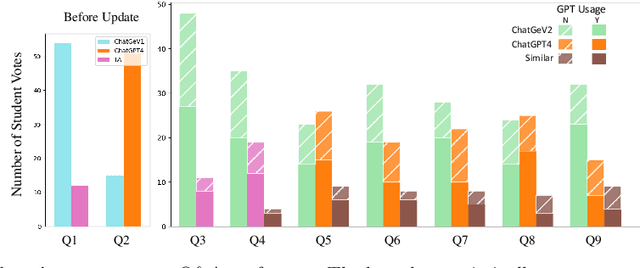Xinrui Song
OncoReg: Medical Image Registration for Oncological Challenges
Apr 01, 2025Abstract:In modern cancer research, the vast volume of medical data generated is often underutilised due to challenges related to patient privacy. The OncoReg Challenge addresses this issue by enabling researchers to develop and validate image registration methods through a two-phase framework that ensures patient privacy while fostering the development of more generalisable AI models. Phase one involves working with a publicly available dataset, while phase two focuses on training models on a private dataset within secure hospital networks. OncoReg builds upon the foundation established by the Learn2Reg Challenge by incorporating the registration of interventional cone-beam computed tomography (CBCT) with standard planning fan-beam CT (FBCT) images in radiotherapy. Accurate image registration is crucial in oncology, particularly for dynamic treatment adjustments in image-guided radiotherapy, where precise alignment is necessary to minimise radiation exposure to healthy tissues while effectively targeting tumours. This work details the methodology and data behind the OncoReg Challenge and provides a comprehensive analysis of the competition entries and results. Findings reveal that feature extraction plays a pivotal role in this registration task. A new method emerging from this challenge demonstrated its versatility, while established approaches continue to perform comparably to newer techniques. Both deep learning and classical approaches still play significant roles in image registration, with the combination of methods - particularly in feature extraction - proving most effective.
Integrating AI in College Education: Positive yet Mixed Experiences with ChatGPT
Jul 08, 2024

Abstract:The integration of artificial intelligence (AI) chatbots into higher education marks a shift towards a new generation of pedagogical tools, mirroring the arrival of milestones like the internet. With the launch of ChatGPT-4 Turbo in November 2023, we developed a ChatGPT-based teaching application (https://chat.openai.com/g/g-1imx1py4K-chatge-medical-imaging) and integrated it into our undergraduate medical imaging course in the Spring 2024 semester. This study investigates the use of ChatGPT throughout a semester-long trial, providing insights into students' engagement, perception, and the overall educational effectiveness of the technology. We systematically collected and analyzed data concerning students' interaction with ChatGPT, focusing on their attitudes, concerns, and usage patterns. The findings indicate that ChatGPT offers significant advantages such as improved information access and increased interactivity, but its adoption is accompanied by concerns about the accuracy of the information provided and the necessity for well-defined guidelines to optimize its use.
General Purpose Image Encoder DINOv2 for Medical Image Registration
Feb 24, 2024



Abstract:Existing medical image registration algorithms rely on either dataset specific training or local texture-based features to align images. The former cannot be reliably implemented without large modality-specific training datasets, while the latter lacks global semantics thus could be easily trapped at local minima. In this paper, we present a training-free deformable image registration method, DINO-Reg, leveraging a general purpose image encoder DINOv2 for image feature extraction. The DINOv2 encoder was trained using the ImageNet data containing natural images. We used the pretrained DINOv2 without any finetuning. Our method feeds the DINOv2 encoded features into a discrete optimizer to find the optimal deformable registration field. We conducted a series of experiments to understand the behavior and role of such a general purpose image encoder in the application of image registration. Combined with handcrafted features, our method won the first place in the recent OncoReg Challenge. To our knowledge, this is the first application of general vision foundation models in medical image registration.
Distance Map Supervised Landmark Localization for MR-TRUS Registration
Oct 11, 2022


Abstract:In this work, we propose to explicitly use the landmarks of prostate to guide the MR-TRUS image registration. We first train a deep neural network to automatically localize a set of meaningful landmarks, and then directly generate the affine registration matrix from the location of these landmarks. For landmark localization, instead of directly training a network to predict the landmark coordinates, we propose to regress a full-resolution distance map of the landmark, which is demonstrated effective in avoiding statistical bias to unsatisfactory performance and thus improving performance. We then use the predicted landmarks to generate the affine transformation matrix, which outperforms the clinicians' manual rigid registration by a significant margin in terms of TRE.
Cross-modal Attention for MRI and Ultrasound Volume Registration
Jul 12, 2021



Abstract:Prostate cancer biopsy benefits from accurate fusion of transrectal ultrasound (TRUS) and magnetic resonance (MR) images. In the past few years, convolutional neural networks (CNNs) have been proved powerful in extracting image features crucial for image registration. However, challenging applications and recent advances in computer vision suggest that CNNs are quite limited in its ability to understand spatial correspondence between features, a task in which the self-attention mechanism excels. This paper aims to develop a self-attention mechanism specifically for cross-modal image registration. Our proposed cross-modal attention block effectively maps each of the features in one volume to all features in the corresponding volume. Our experimental results demonstrate that a CNN network designed with the cross-modal attention block embedded outperforms an advanced CNN network 10 times of its size. We also incorporated visualization techniques to improve the interpretability of our network. The source code of our work is available at https://github.com/DIAL-RPI/Attention-Reg .
 Add to Chrome
Add to Chrome Add to Firefox
Add to Firefox Add to Edge
Add to Edge